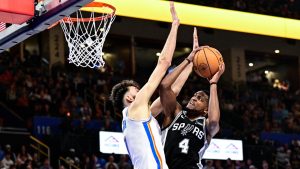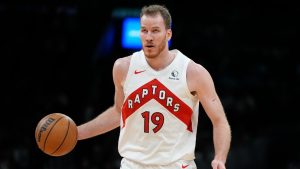The NBA’s free-agent moratorium period will open Thursday evening at 6 p.m. ET.
In case you don’t know what that means, here’s a little FAQ that we’ve put together to help you better understand some of the terminologies that you’re sure to be bombarded with as soon as free agency tips off.
NOTE: All collective bargaining agreement details are sourced from Larry Coon’s CBA FAQ.
Before diving into the terms, here are some key dates to keep in mind:
June 30: Start of the NBA’s free-agent moratorium period at 6 p.m. ET
July 6: End of moratorium period at 12:01 p.m. ET
July 7-17: NBA Summer League in Las Vegas
Oct. 19: NBA regular season begins
The moratorium period was first established in 1999 to give teams equal opportunity to pursue free agents and prevent under-the-table deals agreed upon before the start of free agency.
Therefore, any deal that you hear about during this period can’t be made official until July 6 at 12:01 p.m. ET.
The June 30-July 6 timeline is a full week for anyone who enjoys the drama that the NBA’s off-season provides. They won’t be able to stop refreshing their Twitter timelines as the rumours and deals come fast and furious over this time, making for a lot of exhausting fun.
Put simply, a max contract is exactly what it sounds like: A contract signed that will give the player the maximum amount of money he is allowed under the rules of the collective bargaining agreement.
Where things start to get a little tricky, however, is the "allowed under the rules of the CBA" part.
There are three tiers of max salaries that a player is eligible for, determined by service time. The first tier allows players with zero to six years of NBA service time to command up to 25 per cent of a team’s cap in their starting salary, while the second tier allows players with seven to nine years 30 per cent, and the third tier requires 10 or more years of service for 35 per cent of the cap.
An important thing to take note of when discussing max salaries is the term "starting salary."
The reason why this is specifically mentioned is because max salaries are tied to the salary cap only in the first year of the deal. For multi-year deals, players will still receive raises year-over-year, with those raises connected to the initial value — usually up to five per cent, with a maximum of eight per cent in special cases, such as when a team uses the Larry Bird exception to re-sign a player (more on this in the next question).
And in regard to a "supermax" contract, the actual name of this deal is called the "designated veteran extension/contract," with "supermax" as its nickname.
Essentially, this kind of deal gives players in that 30-per cent tier an opportunity to leapfrog straight into the 35-per cent range without needing to have played in the league for 10 years – if they meet certain steep criteria.
Firstly, a player can only qualify as a "designated veteran player" if they meet one of the following:
• The player was named to the All-NBA First, Second or Third team in the most recent season, or both two seasons that preceded the most recent season.
• The player was named the Defensive Player of the Year in the most recent season, or both two seasons that preceded the most recent season.
• The player was named the NBA's Most Valuable Player in any of the three most recent seasons.
In addition to a "supermax contract," there’s something called the "designated veteran extension," which is basically a "supermax contract extension."
Normally, in addition to those performance goals mentioned before, the player would also have to complete eight or nine seasons continuously with the team who had their rookie contract to be eligible for the designated veteran contract, but for the extension, they need to only have seven or eight seasons under their belt.
So the only difference between the extension and the contract is that a player could potentially be eligible for the former sooner.
Lastly on the "supermax," this kind of salary-tier jumping isn’t just possible for more seasoned players, there’s also one that’s formally called the "fifth year, 30 per cent max criteria" that’s available to players about to come off their rookie-scale deal that’s more commonly referred to as the "Derrick Rose Rule."
More specifically, this Derrick Rose Rule is an addendum to something called the "designated rookie extension/free-agent contract after rookie-scale contract."
Normally, a player on a rookie-scale contract who’s entering their fourth year will be up for an extension worth up to 25 per cent of the cap in the first year of that deal. But, like with a designated veteran extension, if a player meets any one of those lofty goals you can refer to above (like Rose did by winning MVP in 2011) that player would then be eligible to sign an extension to jump them into the 30-per cent tier earlier than usual.
This is among the most common sources of confusion. In order to understand what "Bird rights" are, you need to first understand how exceptions work in the NBA.
An exception is a mechanism in a soft-cap system, such as the NBA’s CBA, that allows teams to function and still make moves even while above the salary cap. The term "Bird rights" comes from the "Larry Bird exception."
Named after the legendary Boston Celtics forward, there are three kinds of Bird exceptions: The regular "Larry Bird exception," the "early Bird exception" and the "non-Bird exception."
For simplicity’s sake, we’ll only focus on the regular Larry Bird exception because this is where the term "Bird rights" actually comes from.
This exception allows a team to exceed the salary cap to re-sign its own free agents, provided the team owns that player’s Bird rights. For a team to own a player’s Bird rights, that player must play three seasons for them without clearing waivers or changing clubs as a free agent. It doesn’t matter if a player signed a three-year deal or three separate one-year deals — as long as the player remains with the team for three seasons, that team will retain the player’s Bird rights.
Additionally, when a player with Bird rights gets traded, those Bird rights carry with them.
Teams that own a player’s Bird rights have certain advantages over rival squads.
A team that owns a player’s Bird rights can offer an additional year of maximum term (five years total compared to the four a team that doesn’t own the player’s Bird rights could offer) as well as higher annual raises.
The standard maximum year-over-year raise an NBA team can offer on a free-agent contract is five per cent, but when using the Larry Bird exception to re-sign a player, a team can offer up to eight-per cent raises.
Here’s a look at each one of these "options clauses," individually:
Team option: Also known as a "club option," this generally gives the team control over the final year of the contract. For example, if a player signs a three-year deal with a team option, that means after the third year it’s up to the organization to decide whether it wants to pick up the final year of the deal and move forward with the player.
There can normally only be one option year, but there’s a special exception for rookie-scale contracts, which feature club options on the third and fourth years.
Player option: Like the name suggests, this gives the player the right to invoke the option or choose not to and then become an unrestricted free agent.
Like the team option, there can only be one option year attached to a contract (with no special circumstances for player options like there are with team options in a rookie-scale contract).
Qualifying offer: This isn’t an option clause, but we’ll talk about it anyway as it’s somewhat similar.
A qualifying offer is a mechanism that allows a team to make its free agent a restricted free agent, and is a standing offer for a one-year guaranteed contract.
If a player is a restricted free agent, this means the player’s team holds the right to keep the player by matching any contract he might sign with another team.
The most common occurrence of restricted free agency comes with players who’ve just finished the fourth year of their rookie-scale contracts, provided they haven’t signed a contract extension before this.
The last day teams may make qualifying offers to players eligible for restricted free agency will be on Wednesday.
Player early termination option: Finally, there’s one other kind of option clause — a player early termination option (ETO). This functions exactly as it sounds as it allows a player to terminate a contract early.
This is pretty similar to a player option, but it comes with less stability for the player to exercise the option to remain with a club in the event unrestricted free agency is not as enticing as it seemed when the contract was first signed.
A rookie-scale contract is something that was established in 1995 to determine salaries for first-round draft picks according to a strict scale depending on draft position, with the money tied very closely to the salary cap.
These contracts are always five-year deals with team options on the third and fourth years and a qualifying offer on the fifth that will cue up that player’s restricted free agency.
The salary cap for next season is projected to be about $122 million, according to Shams Charania of The Athletic with a luxury tax threshold of $149 million, meaning the tax apron will come out to about $155.12 million.
The salary cap number is the most important one to keep in mind, but it’s also good to know what the tax threshold and apron is as well.
As mentioned before when discussing exceptions, they are mechanisms that allow teams to function and still make moves even while above the salary cap. It’s because of these exceptions that nearly every NBA team can — and will — operate above the league salary cap at all times, treating the luxury tax threshold as the real spending deterrent.
There are different tiers of "mid-level exception" and the non-tax-payer mid-level exception is the highest. This is sometimes referred to as the "full mid-level exception" because, in addition to being the most highly valued, it also allows teams to offer contracts in length of up to four years.
For a team to qualify for this exception, a team must be below the luxury-tax apron after making the deal. This rule holds true even if a team decides to split the mid-level exception between more than one player.
In the case of the tax-payer mid-level exception, it functions almost exactly like its big brother, but comes with a much lower value and teams are only allowed to offer contracts up to three years in length. Like the non-tax-payer one, teams can split the value of it to sign multiple players.
When used, however, because a team will likely move over the apron, that club will be hard-capped to the apron’s value for the remainder of the season, meaning it can’t exceed the apron under any circumstance to make an additional move that year.


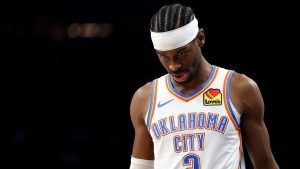
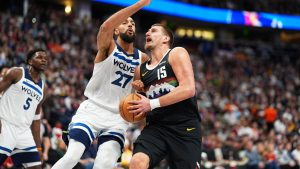
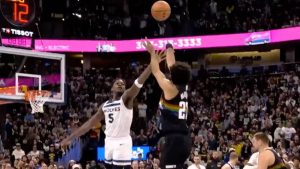 1:16
1:16